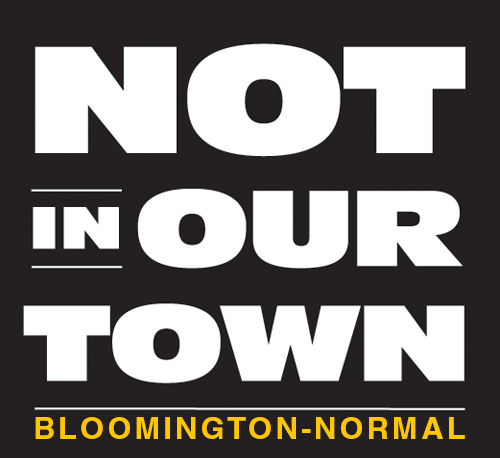Stop by Bloomington First Christian Church (FCC) at 401 West Jefferson this week to view a new effort to offer people homeless Twin Citians “a place that’s safe and warm – a place for a new beginning.”
A prototype Tiny House – a joint project of First Christian, Illinois Wesleyan University, the Matthew Project Church Extension Fund, and Our Redeemer Lutheran Church of Bloomington – was transported last week from the Wesleyan campus to FCC -- the first of several anticipated rotating church stops. Local contractor and volunteer mission builder Mike Robinson of FCC will help finish the interior of the single-person dwelling, which will include an air conditioner/heater and a shower.
FCC Associate Minister Kelley Becker, a local homeless activist disturbed by the recent eviction of several individuals in a “tent city” off Market Street, concedes a wide variety of individual issues behind “chronic homelessness,” including addiction, joblessness, mental illness, and/or “past mistakes involving the judicial system, and ongoing tragedies.” She hopes the model Tiny House will not only show those currently homeless an option, but also spur community leaders to consider “more than the emergency shelter approach” to homelessness.
“I learned very early on in this ministry that I cannot fix all these problems, but I’ve spent a lot of time listening to them,” Becker recounts. “I’ve listened to their stories and their dreams and their regrets. The thing I’ve come to feel strongly about is that none of the problems around chronic homelessness can be fixed without homes. Housing must come first.
“A person who is homeless without an address has little hope of ever being offered a job. A person who is addicted to alcohol will struggle to stay sober if he or she returns from treatment to a tent. Living outside is hard, even when a person makes the choice to do so.”
A recent survey by Bloomington-based PATH found 16 people living on the city’s streets and another 220 in some type of shelter. Roughly 40 were considered “chronically” homeless, meaning they live somewhere not meant for habitation, a safe haven or shelter; have been homeless for at least a year or on at least four separate occasions in the last three years; and/or have been diagnosed with a substance use disorder, serious mental illness, developmental disability, post-traumatic stress disorder or cognitive impairments.
Bloomington’s Tiny House Project is one of many sprouting across the U.S., and it could help address a costly as well as disturbing problem. The cost of providing an apartment and social work for Utah's “housing-first” clients has been estimated at about $11,000 per year, while the public cost for people living on the streets is pegged at around $17,000 annually because of hospital visits and jail costs.

